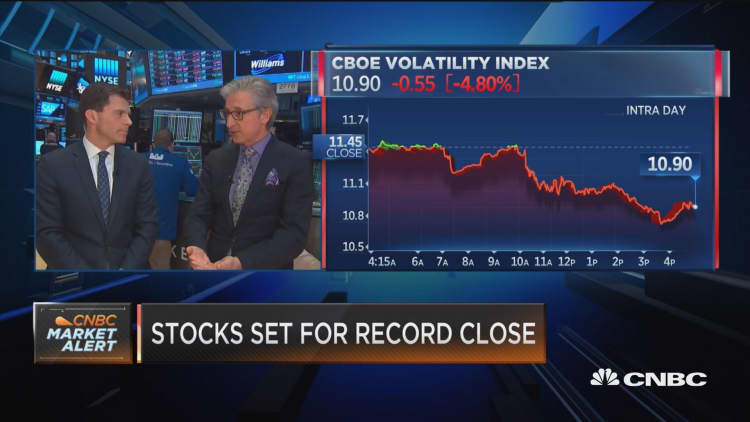
The most hotly debated issue on trading desks right now is the mini-rally in bonds and bond funds we have been seeing in the past few days. What's behind it?
Likely, not too much. At least not yet.
Here's what traders have focused on:
1). A modest uptick in prices in bonds and bond ETFs in the last several days, but particularly in Treasury ETFs. Other bond ETFs like iShares Investment Grade and , the largest bond ETF, have also seen modest price hikes. Volumes have not been particularly strong until Wednesday, when many bond ETFs saw heavy inflows.
2). Bond ETFs were also well-represented in January fund inflows. Not surprisingly, plain-vanilla stock ETFs like the Vanguard S&P 500 Index saw inflows, but surprisingly bond funds like Vanguard Intermediate Term Corporate, Vanguard Short-Term Bond and iShares Investment Grade Corporate all saw notable inflows.
What's going on? First, regarding the recent rally, the rise in prices has been pretty modest, and the volumes (other than Wednesday's) have been small. There has been no countervailing move in stocks. What fits with these facts? Seems to me that some modest short covering is the answer. We do know that traders heavily shorted bonds after the election and maintained those shorts. Modest covering could easily account for the price rise, and the fact that stocks have not reacted.
Second, it's perfectly reasonable to assume that some investors surveyed the landscape after the first of the year and came to a simple conclusion: Interest rates have already risen, but they are unlikely to go through the roof.
"My hunch is that there is no panic that 10-year yields are going to 4 percent anytime soon," said Dave Nadig, CEO of ETF.com. "There's also the added yield play. Investors can see that they are getting 70 basis points more yield than they were getting in October."
3). After such an enormous run-up in stocks in the five weeks after the election, it's perfectly natural to assume that some investors might want to hedge their bets. Matt Hougan, CEO of Inside ETFs, says the equity markets are "priced to near perfection in a very imperfect world" and that some flows back into bonds should be expected.
4). You'll notice the word "Vanguard" appears in a lot of the fund inflows in January. That is to be expected: Vanguard investors are the ultimate long-term investors, so it's clear many were putting long-term money into stock and bond funds for the start of the year
5). Finally, keep fund flows in perspective. Of the roughly $40 billion in inflows in January, U.S. bond funds accounted for $13 billion of that, but U.S. equity funds accounted for $15 billion, while international funds accounted for the remaining roughly $12 billion.
Looks to me like investors are continuing to be on a U.S. recovery and an improvement in earnings, even if some are hedging with some bond investing.
The bottom line on the interest rate story: There's not enough of a signal here yet from a few days of higher prices.


